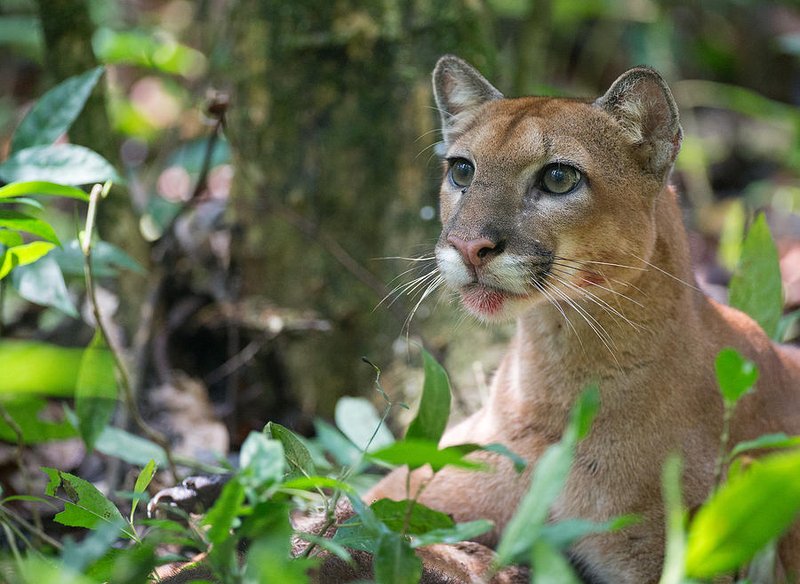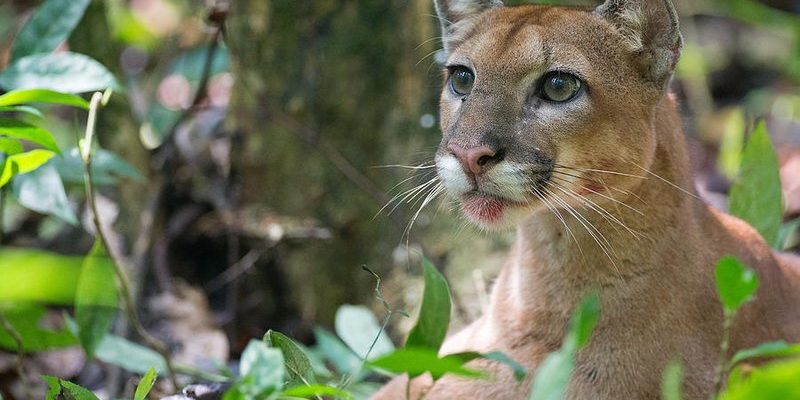
The Puma, often called the mountain lion or cougar, is a fascinating big cat that roams the diverse landscapes of the Americas. Imagine a creature that is as agile as a gymnast, yet powerful enough to take down prey much larger than itself. The Puma is not just a magnificent predator; it plays an essential role in maintaining the delicate balance of its ecosystem. You might be surprised to learn that these cats can adapt to various habitats, from forests to mountains and deserts. Curious yet? Let’s dive deeper into the world of Pumas!
Pumas are often shrouded in mystery, partly due to their elusive nature. They’re like the introverts of the animal kingdom, preferring to keep to themselves. With their keen eyesight and extraordinary sense of hearing, they are perfectly equipped for life in the wild. While their reputation as solitary hunters is well-earned, their social structures can be surprisingly complex, especially when it comes to raising their young. Let’s explore what makes the Puma so unique and vital to our environment.
Physical Characteristics of the Puma
Pumas are striking creatures, and their physical features tell a story of adaptability and strength. On average, adult Pumas weigh between 64 to 220 pounds, making them one of the largest cats in the Americas. When it comes to size, you can think of them as a mix between a house cat and a lion. Their bodies are built for agility, with long legs and a flexible spine that allows for incredible leaps. Imagine being able to jump as high as a tree branch—this is just a normal day for a Puma!
Their coat is another area where Pumas shine. Typically, they have a tawny or light brown fur that helps them blend into their surroundings in the wild. This coat isn’t just for looks; it plays a crucial role in camouflage, allowing them to stalk prey undetected. Interestingly, Puma kittens are born with spots, which gradually fade as they mature. This is nature’s way of helping them hide from potential threats while they’re still vulnerable.
| Size: | 3.25 to 5.25 feet long |
| Weight: | 64 to 220 pounds |
| Habitat: | Forests, mountains, deserts |
| Diet: | Carnivorous, primarily ungulates |
| Speed: | Up to 50 mph |
| Lifespan: | 10 to 15 years in the wild |
Habitat and Distribution
When we talk about the habitat of the Puma, we’re discussing a remarkable range. These cats are incredibly adaptable, found in environments from the snowy Canadian Rockies to the dry deserts of Arizona. Think of them as the ultimate survivors—able to thrive in one of the most diverse terrains in the world. This adaptability is crucial for their survival, as it allows them to move to different areas in search of food and safety.
The Puma’s distribution spans across multiple countries, including the United States, Canada, and parts of South America such as Argentina and Brazil. In the U.S., they predominantly inhabit the western states, often favoring mountainous regions where they can easily navigate the terrain. In these areas, they establish territories that can cover hundreds of square miles. Can you imagine living in such a vast space? It’s a big part of what makes these cats so special—they roam far and wide, marking their territory with scratch marks and scent to let other Pumas know they’re around.
Diet and Hunting Behavior
The diet of a Puma is as impressive as its physical prowess. These cats are skilled hunters, primarily feeding on ungulates like deer and elk. Picture a stealthy athlete training for a major competition; that’s how a Puma approaches its hunt. They rely on their keen eyesight and acute hearing to locate their prey, often stalking quietly until they’re ready to pounce. Their hunting strategy typically involves a combination of ambush and speed, allowing them to cover short distances at remarkable speeds of up to 50 mph.
Interestingly, Pumas are not picky eaters. While they prefer large mammals, they will also hunt smaller animals like rabbits and birds when necessary. This flexibility in diet is a significant advantage that helps them adapt to changing environments and food availability. You might even find them scavenging leftovers from other predators, showcasing their resourcefulness. Their ability to thrive on various food sources is one of the reasons why Pumas have continued to flourish despite habitat loss.
Reproduction and Lifecycle
The journey of a Puma’s life begins in a den, where a mother gives birth to a litter of 1 to 6 kittens after a gestation period of about 90 to 95 days. If you could imagine a cozy cave or a secluded spot in the forest, that’s where the magic happens. The mother will care for her young exclusively for the first few months, ensuring they grow strong and learn the skills needed for survival. During this time, she teaches them everything from hunting techniques to essential social behaviors.
As they grow, Puma kittens start to leave the den and explore their surroundings. They are playful and curious, much like human children. This playful behavior is vital for their development, as it helps sharpen their hunting skills. Once they reach about 1.5 years of age, they’re generally ready to venture out on their own, at which point they’ll seek to establish their own territory. This transition is crucial, as it allows them to continue the cycle of life as they become independent adults.
Conservation and Threats
Despite their prowess, Pumas face various threats that put their populations at risk. Habitat loss is one of the most significant issues—they need large territories to thrive, and human encroachment is shrinking these spaces. Imagine trying to live in a tiny apartment when you’re used to roaming a whole house; that’s how Pumas feel when their habitats are reduced.
Additionally, Pumas face dangers from hunting and vehicle collisions. While they are not currently listed as endangered, certain populations are threatened and require protection to ensure their survival. Conservation efforts, such as wildlife corridors and protected areas, are crucial to help maintain a healthy Puma population. It’s a reminder that while nature is resilient, it needs our care and respect to thrive.
FAQ
What is the difference between a Puma and a cougar?
The terms “Puma” and “cougar” refer to the same species, scientifically known as Puma concolor. It’s a bit like calling the same dish by two different names—one name might be more common in one region than another. While “cougar” is frequently used in North America, “Puma” is often preferred in scientific contexts and other areas of the world.
Do Pumas live in groups or alone?
Pumas are primarily solitary animals, preferring to live and hunt alone. However, they may come together during mating season or when a mother raises her young. Think of them as introverted cats who value their personal space, yet still form important social bonds when needed.
How fast can a Puma run?
A Puma can reach speeds of up to 50 mph in short bursts. This incredible speed is essential for chasing down prey in their natural habitats. Imagine a sprinter taking off from the starting line; that’s the kind of explosive power they possess when they need to catch something!
Where do Pumas live?
Pumas are highly adaptable and have a wide range of habitats. They can be found in forests, mountains, deserts, and even grasslands across North and South America. Their ability to thrive in diverse environments is a testament to their resilience as a species.
Are Pumas dangerous to humans?
While Pumas are powerful predators, encounters with humans are rare. They typically avoid people and are more likely to flee than confront. However, like any wild animal, they should be treated with caution and respect. It’s crucial to remember that they are part of the ecosystem, and maintaining a safe distance is always best.
What do Pumas eat?
Pumas are carnivorous and primarily hunt ungulates such as deer and elk. However, they are opportunistic feeders and will also eat smaller animals when larger prey is scarce. Their flexible diet helps them survive in various environments and conditions.
How long do Pumas live in the wild?
In the wild, Pumas typically live between 10 to 15 years. However, their lifespan can be longer in captivity, where they are protected from threats like predators and habitat loss. This difference is similar to how humans might live longer with access to healthcare and safety.
What sounds do Pumas make?
Pumas are known for their variety of vocalizations, including growls, screams, and chirps. Their calls can be eerily similar to those of a human’s scream at times—definitely something to remember if you’re hiking in their territory! These sounds are used for communication, especially during mating season or when a mother calls her kittens.
How can we help protect Pumas?
Protecting Pumas involves supporting conservation efforts, preserving their habitats, and advocating for policies that help wildlife. Simple actions, like being mindful of wildlife corridors and respecting nature, can go a long way in ensuring that future generations can enjoy these magnificent creatures.
Are there different types of Pumas?
While there is one primary species of Puma, various subspecies exist across their range. These subspecies may exhibit slight differences in size, color, and behavior, often adapted to their specific environments. However, they all share the essential characteristics that define Pumas.
Can Pumas climb trees?
Yes, Pumas are excellent climbers! They often ascend trees to escape dangers or to gain a better vantage point to spot prey. Imagine the agility and grace they exhibit as they leap and scale the trunks—a sight to behold in the wild!
Do Pumas have any natural predators?
Adult Pumas have few natural predators due to their strength and size. However, young or vulnerable kittens may be at risk from larger carnivores such as bears or even other Pumas. It’s a rough world out there, and even the strongest need to be cautious.
How do Pumas mark their territory?
Pumas mark their territory through scent markings and scratch marks on trees. They also use vocalizations to communicate their presence to other Pumas. This is akin to leaving a note for someone to let them know you’re in the area—it’s all about establishing boundaries and avoiding conflict.

